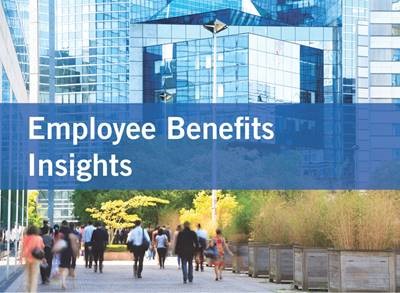Safe Harbors for Offering Health Coverage via an Individual Coverage Health Reimbursement Arrangement

Background Information
The Internal Revenue Service (“IRS”) released final regulations (available here) that permit employers to set aside pre-tax funds into health reimbursement arrangements (“HRAs”) that can be used by employees to pay for premiums and other out-of-pocket costs related to the purchase of individual health insurance policies (known as “individual coverage HRAs” or “ICHRAs”) effective January 1, 2020, provided certain conditions are met (these regulations and the required conditions are discussed here). While those final regulations provided that an employer’s offer of an ICHRA could satisfy the requirement to offer health coverage for purposes of the Patient Protection and Affordable Care Act’s (“ACA”) employer mandate, those final regulations did not resolve how an employer could ensure that its ICHRA offer would satisfy the “affordability” and “minimum value” requirements under Internal Revenue Code (“Code”) section 4980H(b).
The IRS has now issued proposed regulations (available here) with safe harbors that may be used to determine whether an offer of ICHRA coverage would satisfy the “affordability” and “minimum value” requirements under Code section 4980H(b), thereby relieving the employer of liability for a penalty thereunder.
Employers may rely on these proposed regulations effective January 1, 2020 (and may continue to rely on them for any plan year that begins prior to the date that is six months following the publication of the final regulations).
Avoiding the Penalty for Offering Coverage That is Not Affordable or Does Not Provide Minimum Value
Under the ACA’s employer mandate, applicable large employers (employers with 50 or more full-time employees, including full-time equivalent employees, on average during the prior year) must:
(1) offer minimum essential health coverage to at least 95% of their full-time employees (and their dependents) to avoid the penalty under Code section 4980H(a); and
(2) such coverage must be “affordable” and provide “minimum value” to avoid the penalty under Code section 4980H(b).
Either of these penalties may be triggered by an employee purchasing coverage via the Exchange and receiving a premium tax credit for such Exchange coverage.
As indicated above, the final regulations had already confirmed that an employer’s offer of ICHRA coverage could satisfy the requirement to offer health coverage to full-time employees for purposes of the Code section 4980H(a) penalty. The proposed regulations provide safe harbors that may be used to satisfy the “affordability” and “minimum value” requirements for purposes of the Code section 4980H(b) penalty.
An offer of ICHRA coverage is considered “affordable” if the employee’s monthly “required contribution amount” does not exceed 1/12 of the product of the employee’s household income for the year and the required contribution percentage (9.78% for plan years beginning in 2020). The “required contribution amount” is the amount the employee would be required to pay out of his or her own pocket for the monthly premium for the lowest-cost silver plan for self-only coverage offered through the Exchange for the rating area where the employee resides (after taking into account the monthly self-only employer ICHRA contribution).
Location and Look-Back Month Safe Harbors: The proposed regulations set forth safe harbors that an applicable large employer may use to determine whether its offer of ICHRA coverage is “affordable” for purposes of avoiding the Code section 4980H(b) penalty, even if the offer would not otherwise meet the affordability requirements for a particular employee and that employee ultimately receives a premium tax credit:
- Location Safe Harbor:The proposed regulations provide that an employer may use the monthly premium for the lowest-cost silver plan for self-only coverage offered through the Exchange for the rating area of the employee’s primary site of employment to assess affordability (instead of the employee’s place of residence).For purposes of this safe harbor, the employee’s primary site of employment is the location where the employer reasonably expects the employee to perform services on the first day of the plan year (but note that the primary site of employment must be updated if the employee’s actual work location changes and the employer expects the change to be permanent or indefinite).For remote employees, an employer should use the location where the employee reports as the employee’s primary site of employment (if there is no reporting location, the employer must use the location of the employee’s residence as the primary site of employment). If there are different lowest-cost silver plans in different parts of one rating area, then when applying the location safe harbor, the employer can use the lowest-cost silver plan offered in the location of the employee’s primary site of employment.
- Look–Back Month Safe Harbor:The affordability of ICHRA coverage for a month is determined based on the premium for the lowest-cost silver plan for self-only coverage offered through the Exchange for the rating area where the employee resides (or the employee’s primary site of employment if also applying the location safe harbor) for that particular month.However, the IRS recognized that employers generally determine the health benefits they will offer for a particular year well in advance of the start of the plan year.As a result, the proposed regulations provide that for an ICHRA with a calendar year plan year, employers can use the monthly premium for the applicable lowest-cost silver plan from January of the prior calendar year to determine affordability (ICHRA plans with non-calendar year plan years can use the monthly premium of the applicable lowest-cost silver plan from January of the current calendar year).Note that employers still have to apply current plan year employee ages, even if using prior year premiums.
Household Income Safe Harbors: The proposed regulations further provide that an employer may also use the current ACA household income safe harbors (subject to the existing requirements for application of those safe harbors) as a substitute for an employee’s actual household income (i.e., the W-2 wages safe harbor, federal poverty line safe harbor, and rate of pay safe harbor) to determine whether the offer of ICHRA coverage is affordable for purposes of the ACA’s employer mandate.
Age-Related Issues: The proposed regulations also clarify how to determine an employee’s age for purposes of determining the premium for the applicable lowest-cost silver plan offered through the Exchange for the rating area where the employee resides (or the employee’s primary site of employment if applying the location safe harbor): an employee’s age for the entire ICHRA plan year will be deemed to be the age of the employee on the first day of the plan year (and for employees who become eligible during the ICHRA plan year, the date their ICHRA coverage becomes effective). The proposed regulations further provide that in areas where the lowest-cost silver plan varies by age, the employer can use the lowest-cost silver plan for the lowest age band for an employee’s location (which may be determined either by place of residence or by applying the location safe harbor to instead use primary site of employment).
Consistency Requirement: Use of the proposed ICHRA safe harbors is optional and an applicable large employer may choose to apply different ICHRA safe harbors to different classes of employees, provided it does so on a uniform and consistent basis for all employees in the same class.
Minimum Value: The proposed regulations state that ICHRA coverage that is considered “affordable” (including coverage that is considered affordable after application of the ICHRA safe harbors discussed above) is deemed to provide minimum value for purposes of Code section 4980H(b).
Conclusion
The proposed regulations offer welcome safe harbors and guidance that employers can use to confirm that an ICHRA offer is sufficient to avoid an employer mandate penalty. However, employers should note that these regulations are currently in proposed form only, and should stay tuned for future developments.
As part of Foley’s ongoing commitment to provide legal insight to our clients and colleagues, our Employee Benefits and Executive Compensation Group has a monthly newsletter we call “Employee Benefits Insights,” where we provide you with updates on the most recent and pressing matters concerning employee benefits and other related topics. Click here, or on the image above to sign up to our communication preferences manager.

